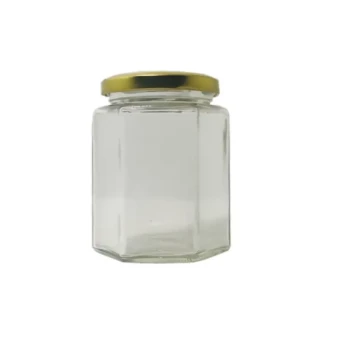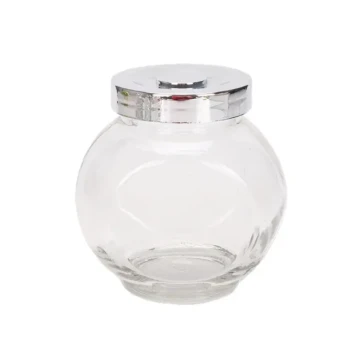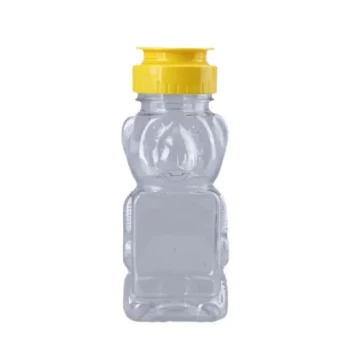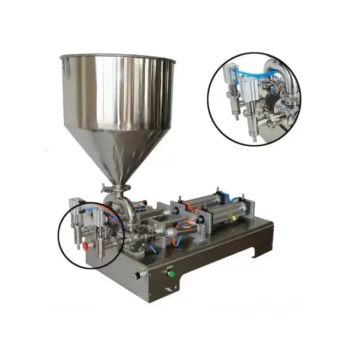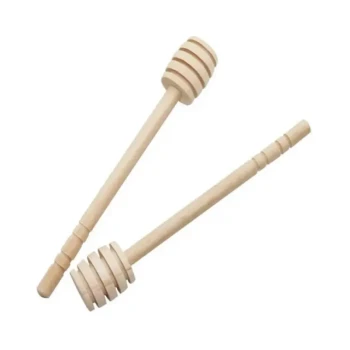The best packaging material for honey is a choice between two primary options: glass and food-grade plastic. Glass offers the highest level of chemical inertness and product protection, making it the gold standard for preserving quality. However, food-grade plastic, particularly PET, provides significant advantages in terms of cost, weight, and durability, making it a highly practical choice for many producers.
The decision between glass and plastic is not about which is universally "best," but which best aligns with your goals. Glass prioritizes absolute quality and a premium brand image, while plastic prioritizes cost-efficiency, safety from breakage, and consumer convenience.
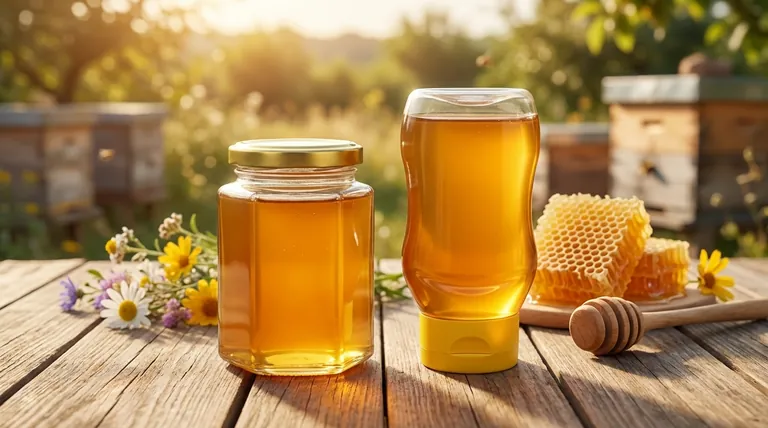
The Two Primary Materials: Glass vs. Plastic
The vast majority of honey sold directly to consumers is packaged in either glass or plastic. Understanding the inherent properties of each is the first step in making an informed decision.
Glass: The Gold Standard for Preservation
Glass is chemically inert, meaning it will not react with the honey or impart any off-flavors over time. Its non-porous nature makes it impermeable to oxygen and moisture, providing the most stable environment for long-term storage.
This impermeability is critical for preventing two common issues: fermentation from absorbed moisture and quality degradation from oxidation. For this reason, glass is often the choice for premium, raw, or artisanal honey where preserving subtle flavor notes is paramount.
Food-Grade Plastic: The Pragmatic Choice
Modern food-grade plastics, especially polyethylene terephthalate (PET), are completely safe for honey storage. These materials are lightweight, shatter-resistant, and significantly cheaper to purchase and ship than glass.
The primary advantage of plastic is its versatility and durability. This makes it ideal for squeeze bottles that offer user-friendly dispensing and for larger containers where the weight of glass would be prohibitive.
Critical Factors in Your Decision
Choosing the right material goes beyond the container itself. It impacts your brand, your budget, and the quality of your product as it sits on the shelf.
Product Quality & Shelf Life
Glass maintains honey quality for the longest duration due to its superior barrier properties. Plastic, while excellent, may allow for a minuscule amount of moisture exchange over a very long period, which can slightly accelerate crystallization.
Regardless of the material, an airtight seal is non-negotiable. A poor seal will compromise the honey's quality far faster than the container material itself.
Brand Perception & Market Position
Packaging is a silent salesman. A heavy glass jar conveys a sense of premium quality, tradition, and eco-consciousness (due to its high recyclability).
Plastic containers, especially squeeze bottles, are associated with convenience, family-friendliness, and value. This isn't a negative; it simply targets a different consumer who prioritizes ease of use over artisanal presentation.
Logistics & Cost
This is where plastic has a decisive advantage. Glass is heavy and fragile. This increases shipping costs and requires more robust secondary packaging to prevent breakage, adding further expense and labor.
Plastic's light weight and durability translate directly to lower shipping costs and a near-zero risk of product loss from breakage during transit and handling.
Understanding the Trade-offs & Nuances
Making the optimal choice requires acknowledging some important details that are often overlooked.
The Misconception of "Bad" Plastic
It's crucial to distinguish between types of plastic. While non-food-grade plastics or certain metals can cause oxidation or leach chemicals, food-grade PET plastic is specifically engineered for contact with food and is perfectly safe for storing honey.
The Critical Role of UV Protection
Honey is sensitive to light. Direct sunlight and even prolonged exposure to artificial light can degrade its enzymes and darken its color.
To mitigate this, consider using amber or other dark-colored glass. For plastic, an opaque container offers similar UV protection. While clear containers are excellent for showcasing the honey's color, they offer the least protection from light damage.
Beyond the Jar: Other Formats
While jars and bottles are most common, other formats serve specific niches.
- Flexible Pouches & Sachets: These are lightweight and ideal for single-servings, on-the-go use, or as samples.
- Pails & Drums: For bulk, B2B, or food service sales, large food-grade plastic pails or steel drums are the industry standard.
Making the Right Choice for Your Goal
Select your packaging material based on a clear understanding of your primary business objective.
- If your primary focus is maximum quality and a premium brand: Choose glass jars with airtight lids. Consider amber glass for superior UV protection and the longest possible shelf life.
- If your primary focus is cost-efficiency and consumer convenience: Choose food-grade PET plastic containers. Squeeze bottles are a popular, user-friendly option that reduces shipping costs and eliminates breakage risk.
- If your primary focus is portability and single-use applications: Use flexible plastic pouches or sachets, which offer the ultimate in lightweight convenience for travel or food service.
Ultimately, the best container is one that protects your honey while clearly communicating its unique value to your target customer.
Summary Table:
| Material | Best For | Key Advantages | Key Considerations |
|---|---|---|---|
| Glass | Premium/Artisanal Honey | Superior preservation, premium brand image, chemically inert | Higher cost, heavier weight, risk of breakage |
| Food-Grade Plastic (PET) | Cost-Efficiency & Convenience | Lightweight, shatter-resistant, lower shipping costs | Minimal long-term moisture exchange potential |
Ready to Source the Right Packaging for Your Honey Business?
Choosing the optimal packaging is critical for protecting your product and your brand. HONESTBEE supplies commercial apiaries and beekeeping equipment distributors with the wholesale packaging solutions they need to succeed.
We provide a range of high-quality, food-safe containers to meet your specific goals, whether you prioritize the premium appeal of glass or the practical benefits of plastic.
Let us help you enhance your product's shelf life, reduce operational costs, and strengthen your market position.
Contact HONESTBEE today to discuss your packaging needs and request a wholesale quote!
Visual Guide
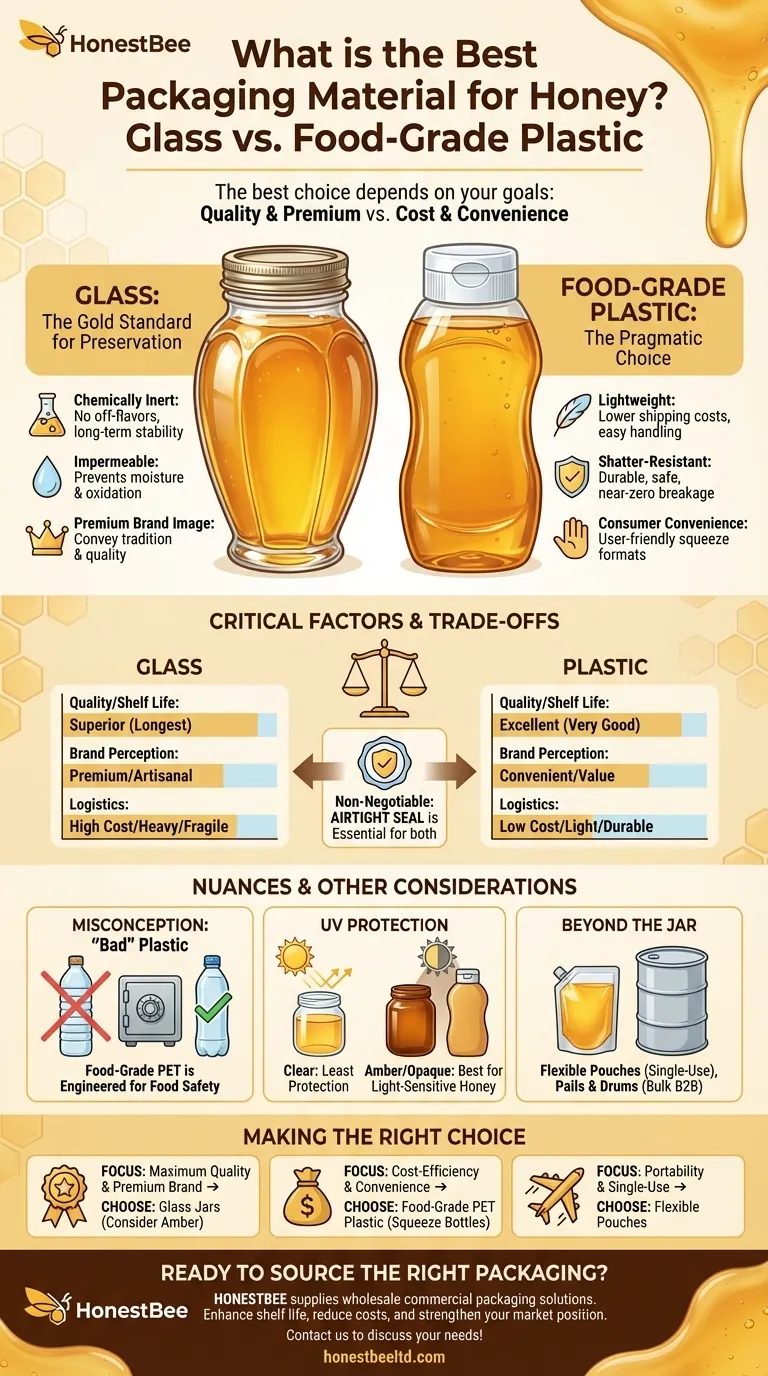
Related Products
- Hexagonal Glass Honey Jars with Metal Lug Caps Elegant Versatile Packaging
- Classic Drum Shaped Glass Honey Jar with Airtight Lid
- Inverted Squeezable Honey Jar with No Drip Flip Top Cap for Easy Pouring
- Classic Honey Bear Jars with Flip Top Dispensing Cap for Liquid Sweeteners
- Pneumatic Double Nozzle Honey Filling Bottling Packaging Machine
People Also Ask
- What are the common types of honey packaging? A Guide to Glass, Plastic, Pouches & Tins
- What is the term for honey can absorb moisture from the air? Understanding Hygroscopy
- How many jars of honey do you get from a hive? Unlock Sustainable Harvesting Secrets
- What makes raw honey more aesthetically appealing than processed honey? Discover the Beauty of Authenticity
- What are the advantages of using glass jars for honey packaging? Preserve Purity & Elevate Your Brand
